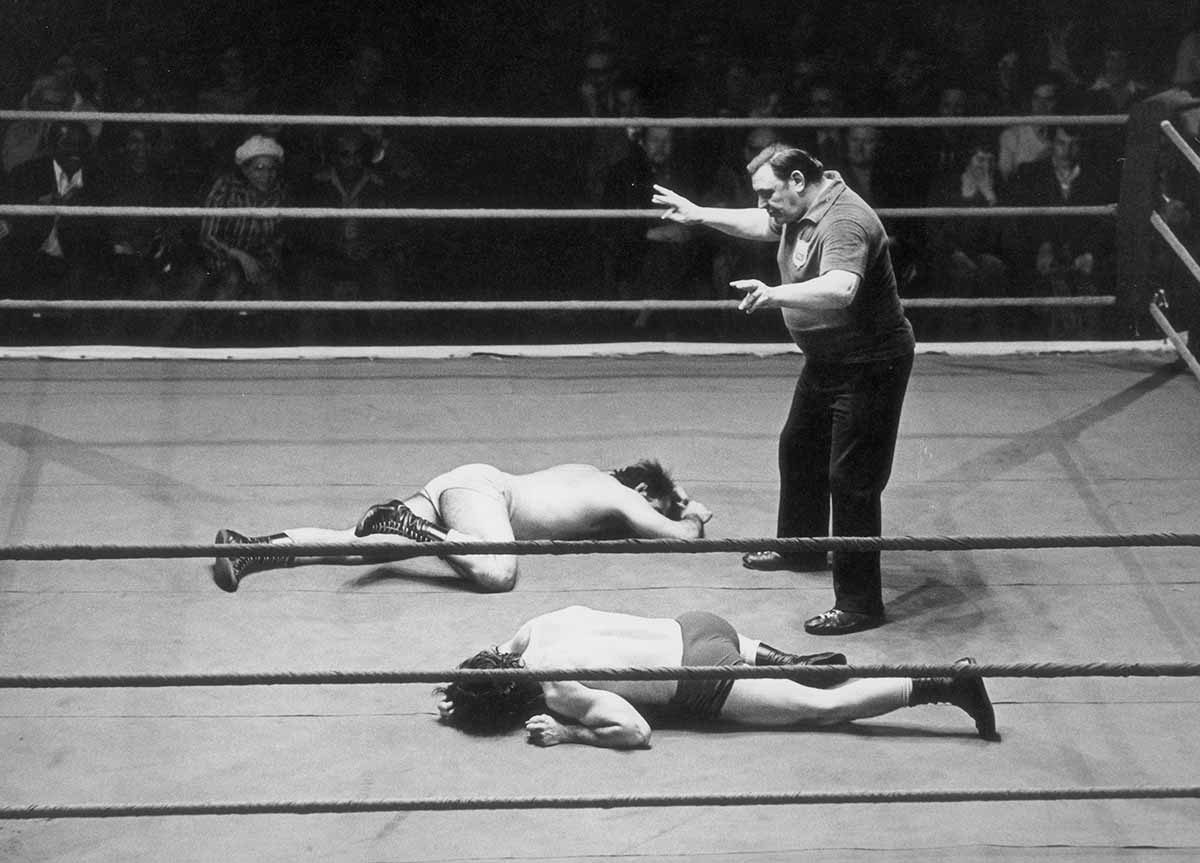“I made plenty of mistakes and learned something from most of them but that is inevitable if you don’t want to play safe”
– Gerry Cranham
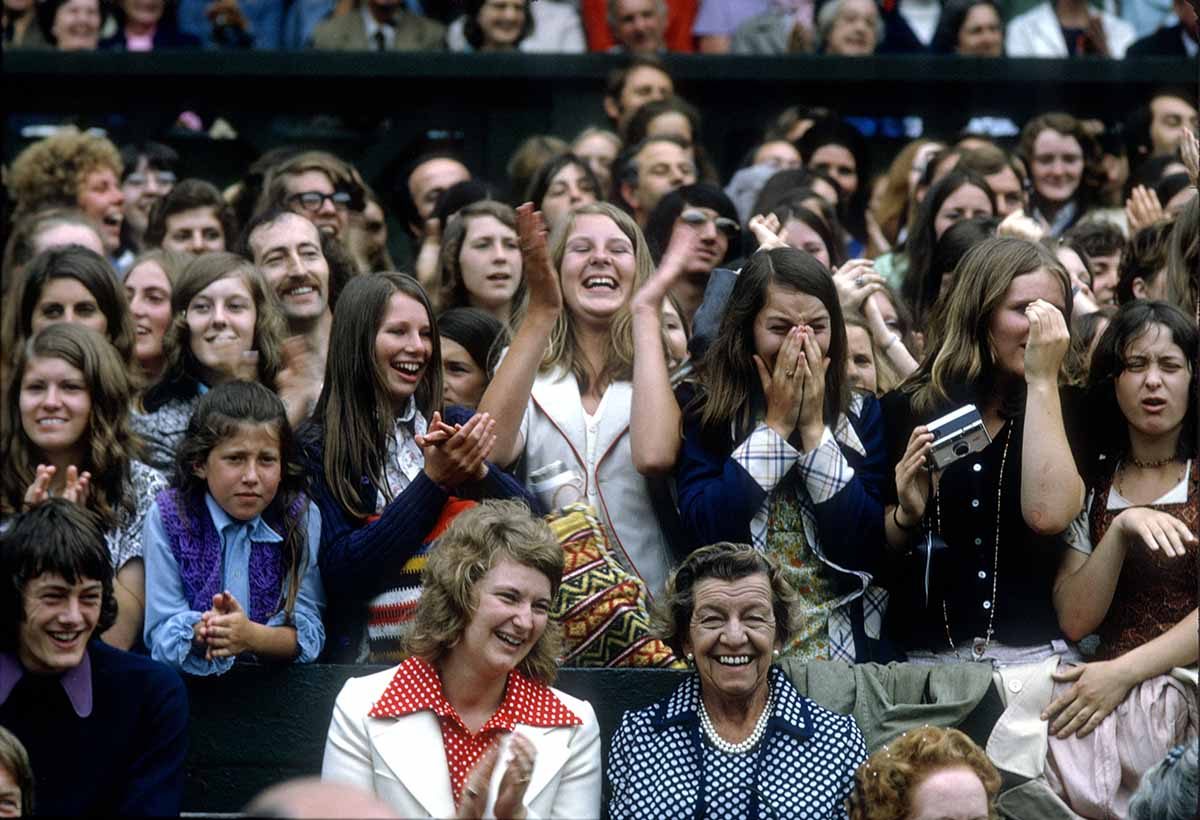
Born in 1929, Gerry Cranham is a British photographer, who is widely regarded as the one of the foremost practitioners in sports photography.
As Henry Winter writes in This Sporting Life, a new book of Cranham’s work: “It always amazes me how sports photographers consistently produce such beauty and drama under such pressure (Henry Winter writes). They are vulnerable to the elements and torrential downpours. They have their backs to the fans and are at risk from missiles. They could be down the wrong end from the action.”
Cranham’s work takes shows us the action and takes us to the heart of the crowd.
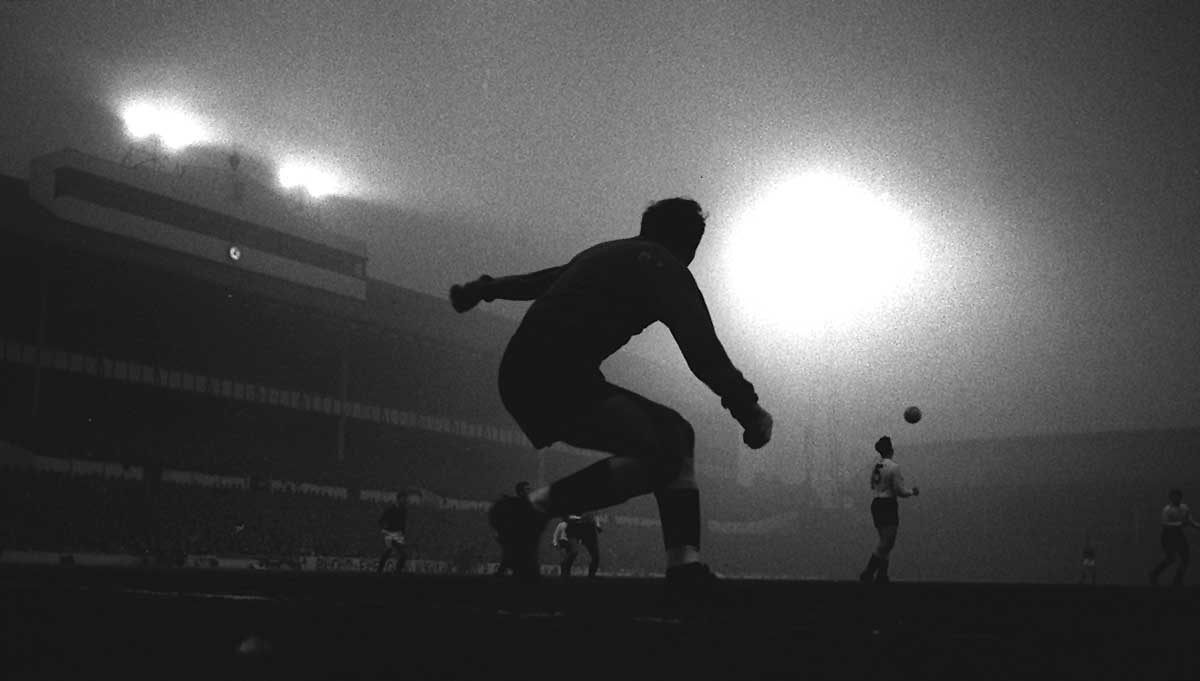
04/01/1964 FA Cup round 3.Tottenham Hotspur v Chelsea. Tottenham goalkeeper John Hollowbread guards his goal.
Photo: Gerry Cranham / Offside
After five years in the army and a career in athletics (middle-distance running), Cranham became a coach. He used his passion for photography, in his work as a trainer using photos of the athletes to correct a stance, or analyse a stride. In 1957 he began his career as a photographer full time, sticking with his favourite subject matter, and publishing his first photo at the age of 28.
Cranham has worked with many newspapers and magazines such as The Watch, Sports Illustrated, Time and The Evening Standard, and his work is in the collection of the Victoria & Albert Museum.
Now his work has been compiled in a fabulous book, co-authored with his friend, the photographer Mark Leech, who tells us:
“Gerry Cranham was a both a master and pioneer of photography and This Sporting Life draws on his images of the 1960s and 1970s, two seismic decades of sport. Cranham covered this period in forensic detail and with incredible vigour, capturing the humanity as well as the thrill of sport, while shooting everything from Highland games to Olympics.
“Sporting greats featured include: Muhammad Ali, Billie Jean King, James Hunt, Olga Korbut, Bobby Moore, Gary Sobers, Tessa Sanderson and Red Rum. Era-defining events covered include: the 1966 World Cup, the 1972 Olympic Games, the Boat Race, the Le Mans 24 Hours, Wimbledon tennis, the Ryder Cup, the Grand National and Grasmere Country Sports. The list could go on…
“This Sporting Life is the first comprehensive collection of Gerry Cranham’s work and is the definitive volume of his amazing career.”
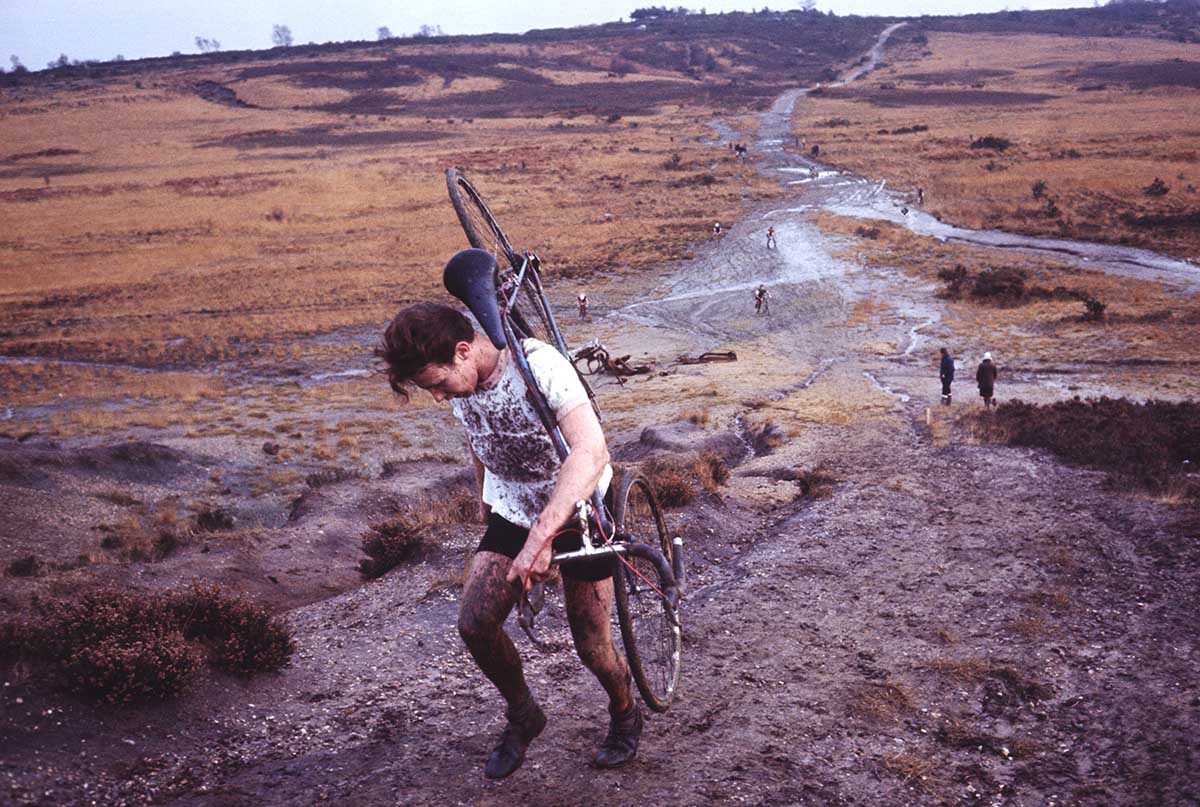
10 December 1966 – Bagshot Cyclocross Scrambles
Photo: Gerry Cranham / Offside
Gerry Cranham only began taking photos to assist with the coaching of athletes after his own promising running career had been cut short by injury. He’d been selected to run a leg of the torch-bearing procession for the 1948 Olympic Games and had high hopes of making the grade as an athlete.
His experience in athletics helped his photography. Cranham observed that “being a sportsman helped at times, you have to be knowledgeable. So many photographers would shoot at the wrong moment.”
In 2019, he recalled how his career began:
“I had to give up athletics because I injured my foot, so I became a coach and bought a camera to take pictures of the guys I was training, and it all started from there. It was trial and error as I wasn’t trained as a photographer. I just made a dark room in the coal cellar, it was so primitive, but I just picked it up…
“They were very restrictive on allowing people in, so I’d just buy a ticket and start shooting from some obscure spots, and luckily my stuff started to stand out. I’d always try and do something that was different, that was daring. There wasn’t the opposition or competition then if somebody was very different, it stood out. I was also very persistent because I had a wife and five children and there was a lot of income to be earned – I couldn’t afford failure!”
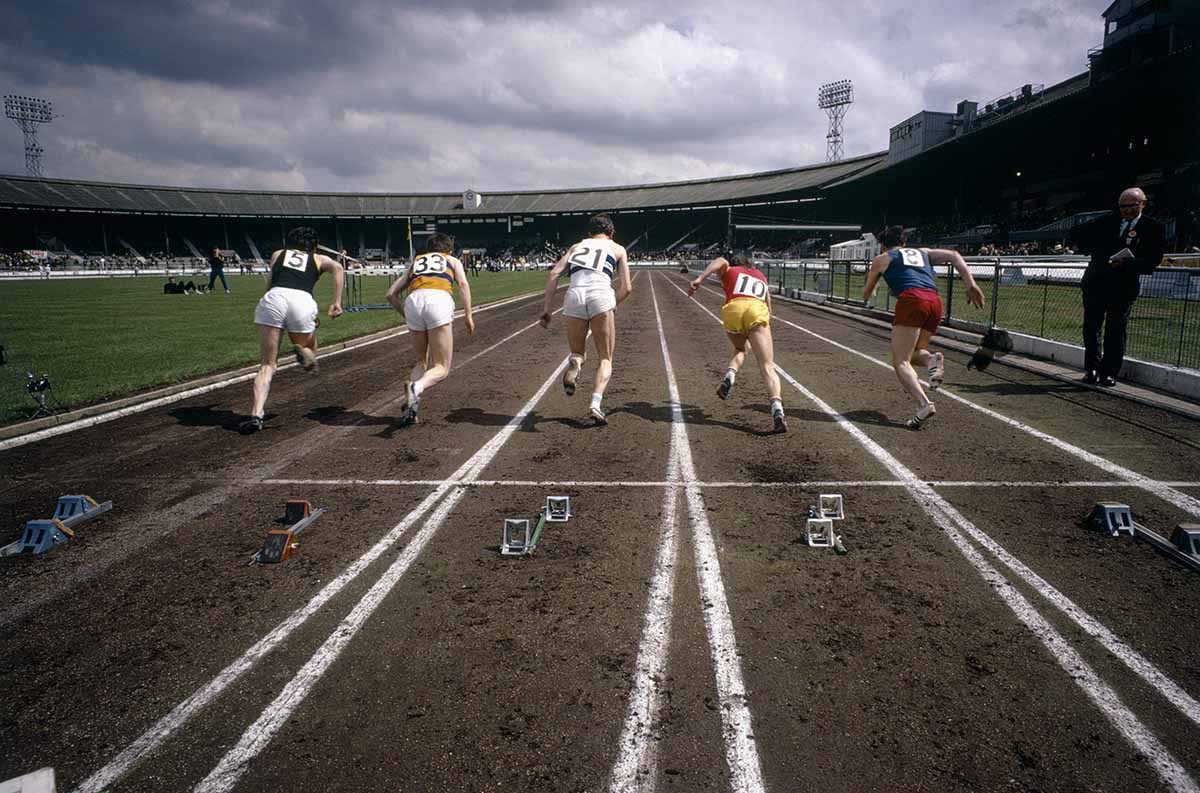
13th June 1967 AAA Athletics Championships, White City, London
The sprinters race away from the starting blocks in the 100m
Photo: Gerry Cranham / Offside
The breakthrough moment had come in November 1961 when Cranham borrowed his wife’s bike and cycled to Blackheath to cover the local rugby team in their home fixture against Oxford University. Rhodes Scholar Pete Dawkins was playing for Oxford and he was captured by Cranham throttling an opponent as they scrapped on the touchline. On arrival back at the family home in Tooting, Cranham’s wife had returned from a nursing home with the couple’s fourth child and Gerry had to bath and feed the other three, delaying his moment to develop the film in the converted coal bunker.
Eventually the photo appeared in the UK newspapers and this story was then picked up by Sports Illustrated, who wanted to know more about this hitherto unknown photographer. “I was always lucky”, the perpetually modest Cranham often says.
“My biggest inspiration for developing my own style was my need to feed a family of seven” Cranham has said, adding “My work simply had to stand out, it was not much of a choice”.
…
Outside of sport he was sought after by the newly launched colour supplements and when Winston Churchill died in 1965, the Sunday Telegraph chose Cranham ahead of a host of Magnum photographers, for the key position in the Whispering Gallery at St Paul’s Cathedral. When the picture picture editor was asked about this he replied, “He never misses”.
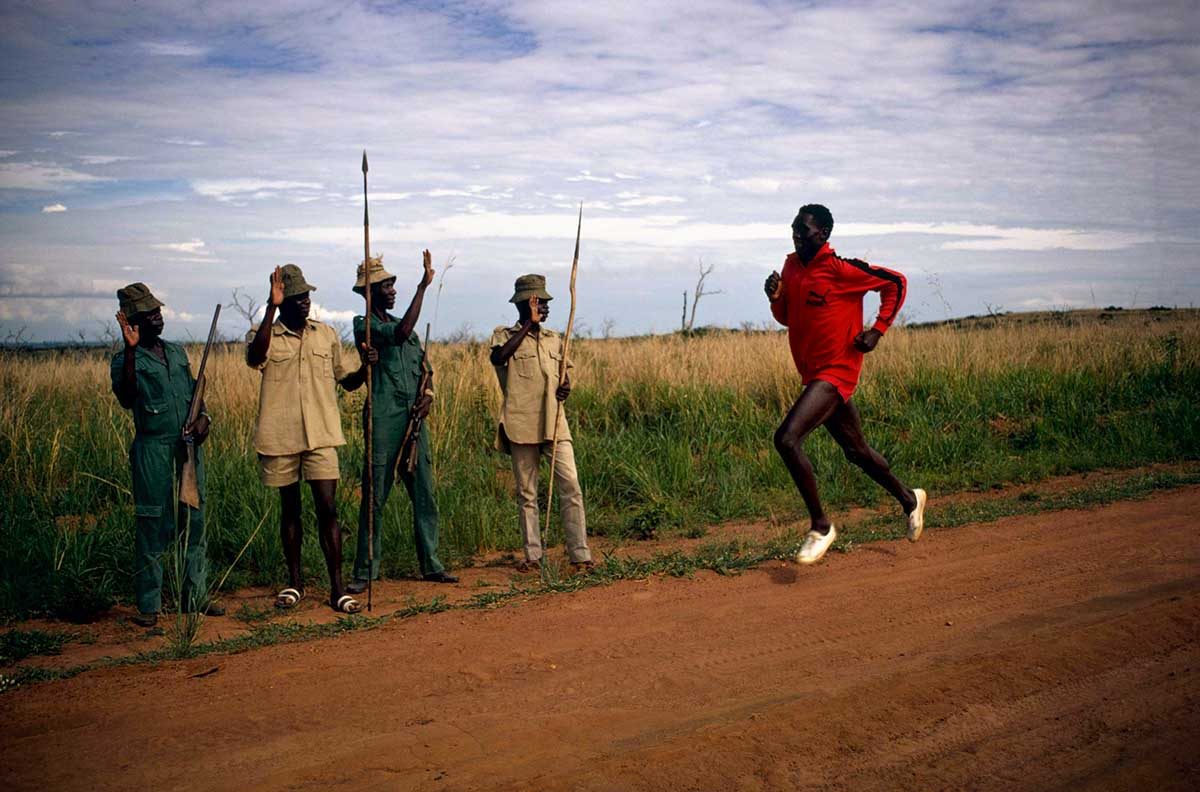
10/4/1972 World Athletics. Uganda.
John Aki Bua runs past a group of park rangers at the Ruwenzori Range in the Murchison Fall National Park as part of his training regime.
Photo: Gerry Cranham / Offside.

11 April 1970 – Chelsea fans around Slaidburn Street, off the Kings Road, prepare for the FA Cup Final against Leeds United by wearing Chelsea favours and decorating the street . Two young boys pose for the camera.
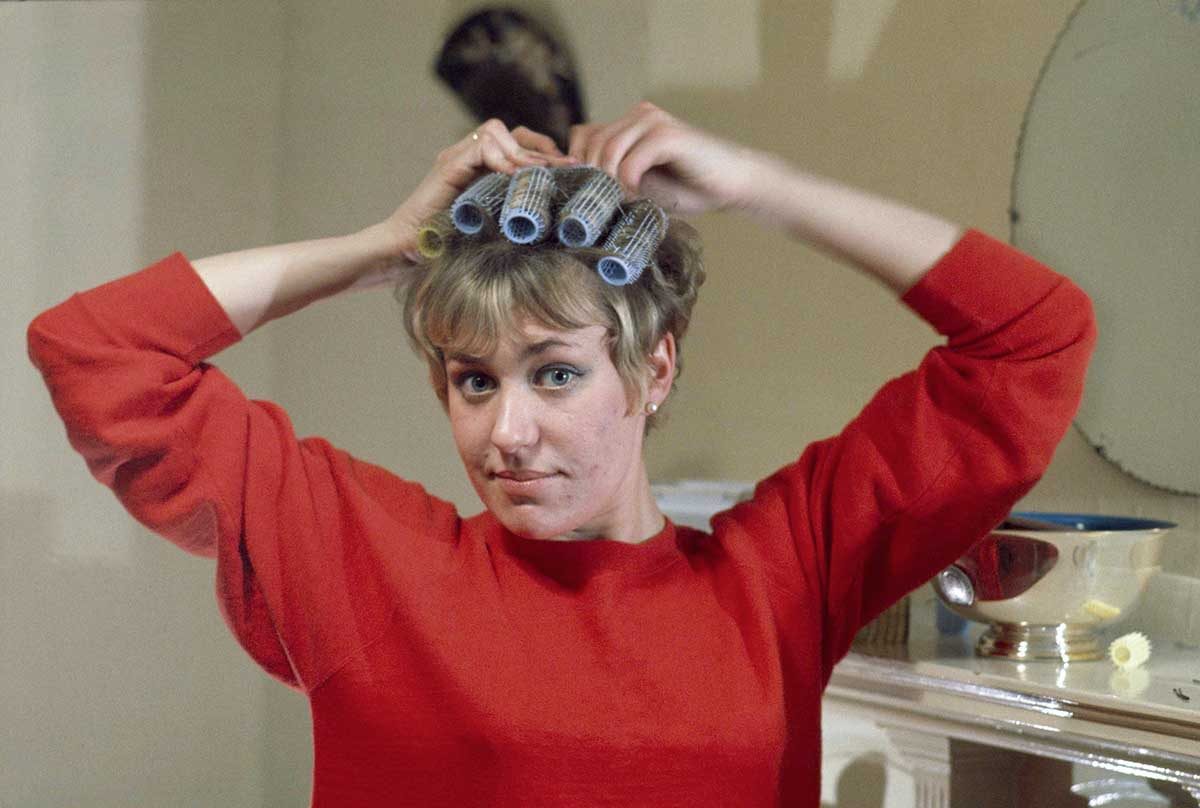
19/3/1968 Athletics.
Lillian Board puts curlers in her hair at home in Ealing.
Photo: Gerry Cranham / Offside.
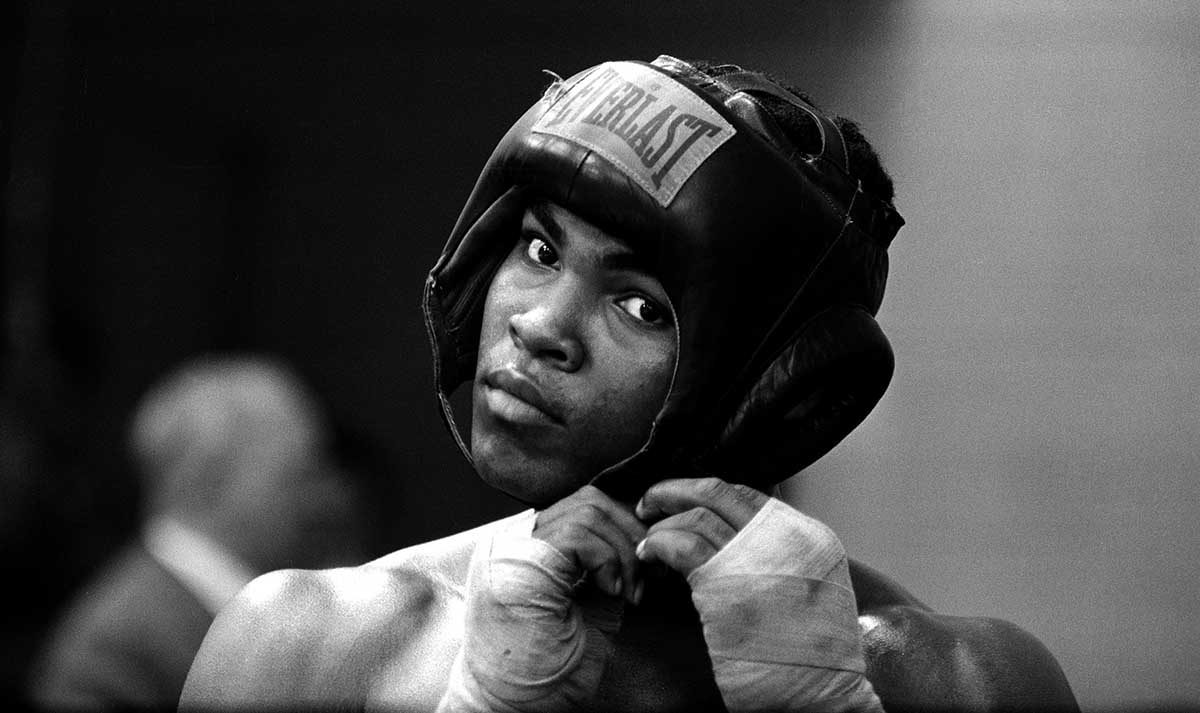
30 May 1963 Territorial Army Drill Hall Shepherds Bush
Heavyweight boxer Cassius Clay adjusts the strap on his headgear during a training session.
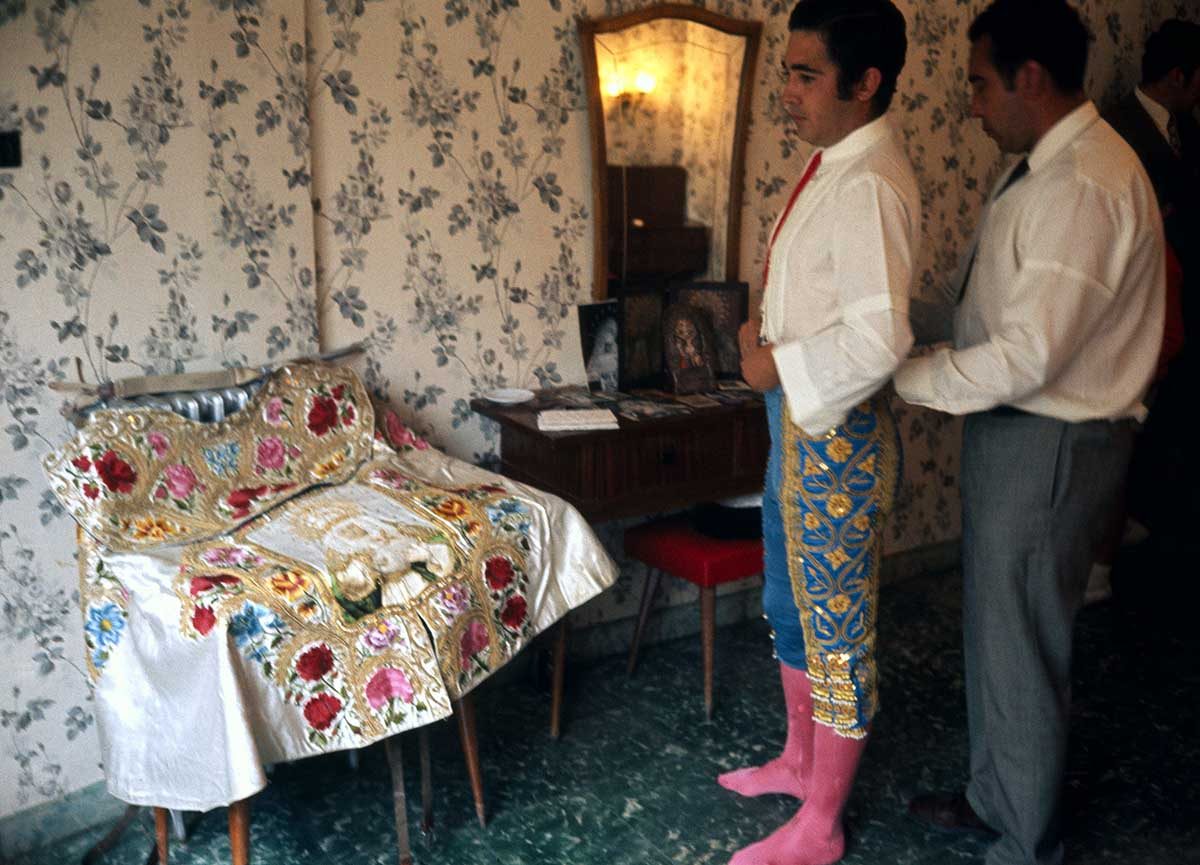
1/6/1971 Bullfighting. Talavera de la Reina, Spain.
Matador Paco Camino prepares for the bullfight.
Photo: Gerry Cranham / Offside.

21/8/1964 Sailing.
Olympic sailors Keith Musto and Tony Morgan.
Photo: Gerry Cranham / Offside.
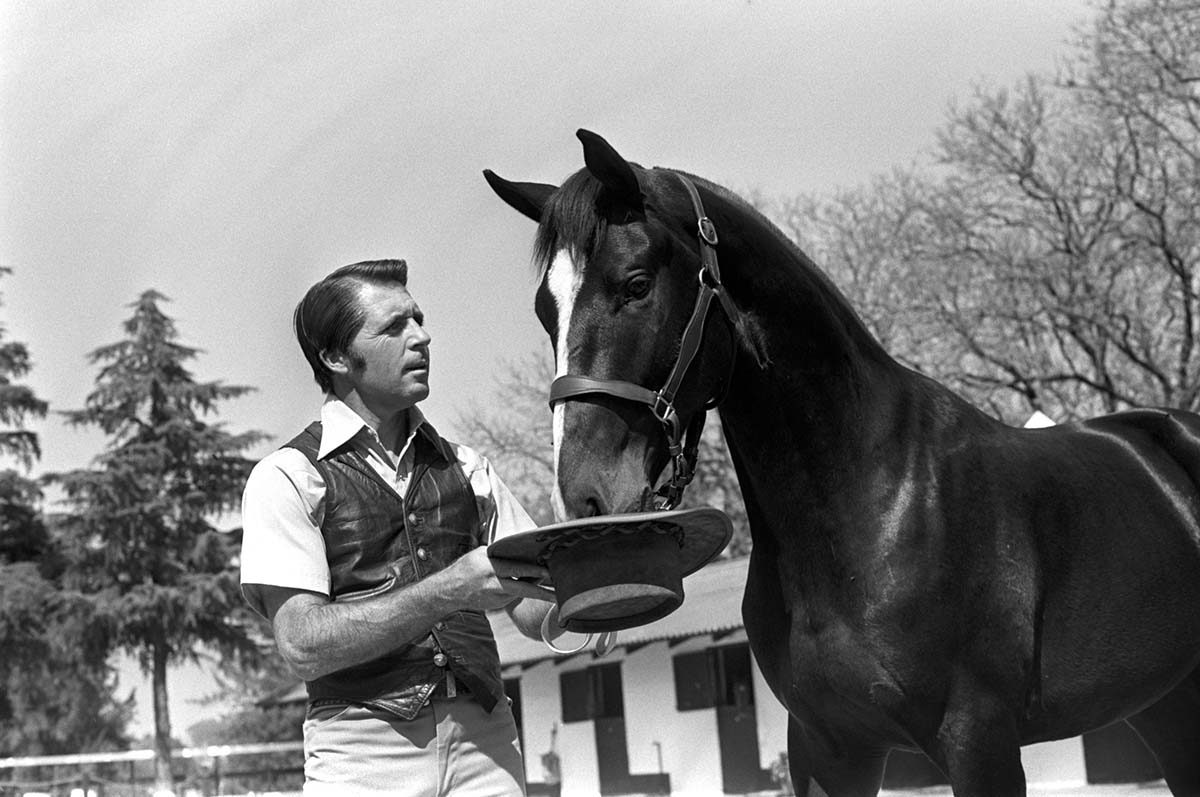
2 August 1978 – Golf – Feature
Gary Player lets one of his horses drink from his hat on his stud farm ranch in South Africa
Photo: Gerry Cranham / Offside
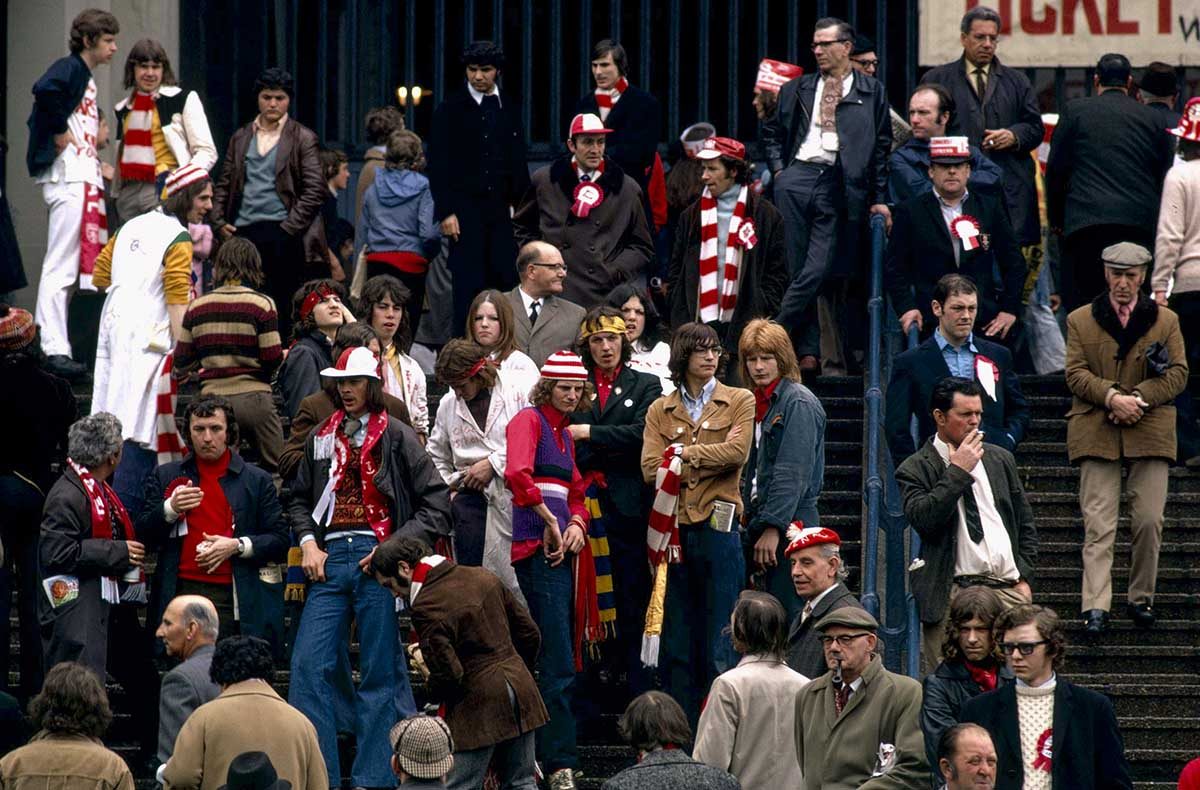
06 May 1972 FA Cup Final Arsenal v Leeds United :
Arsenal fans gather outside Wembley Stadium before the turnstiles have opened.
Photo: Gerry Cranham / Offside
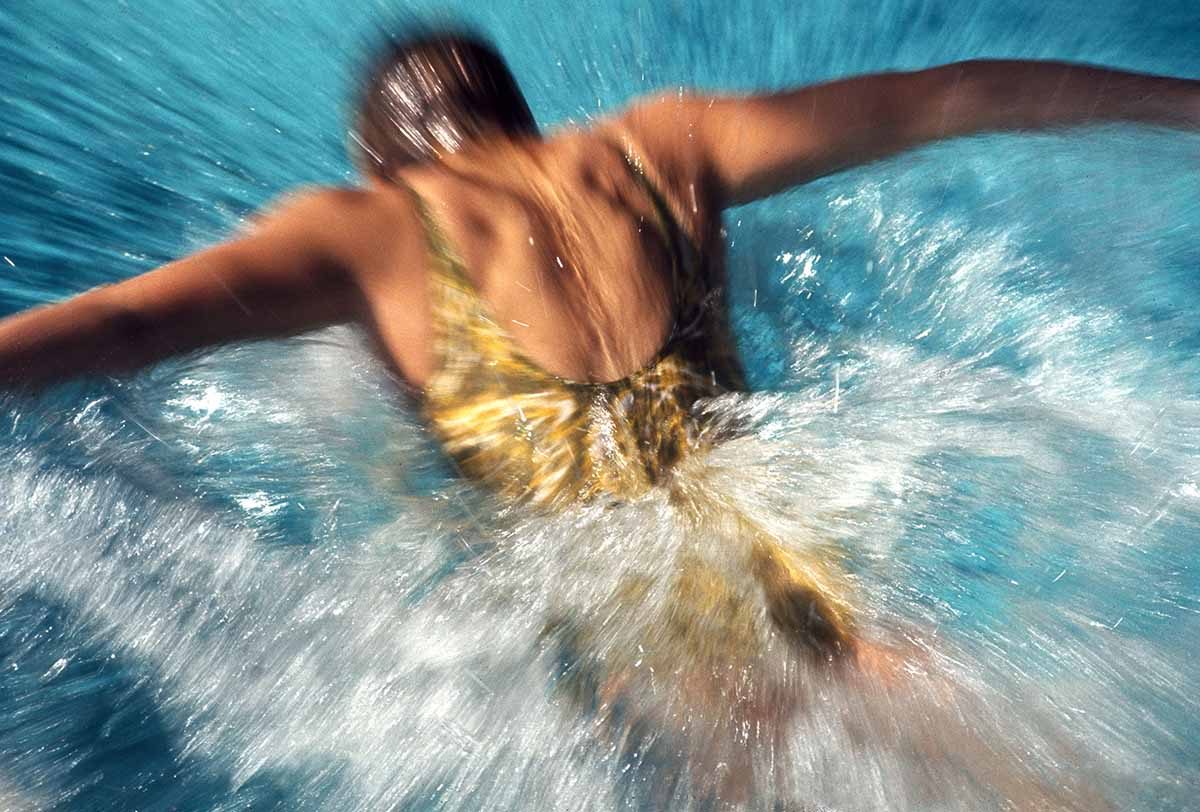
12 September 1973 – Swimming – Shane Gould
An abstract shot of Australian swimmer Shane Gould as she swims the butterfly
Photo: Gerry Cranham / Offside
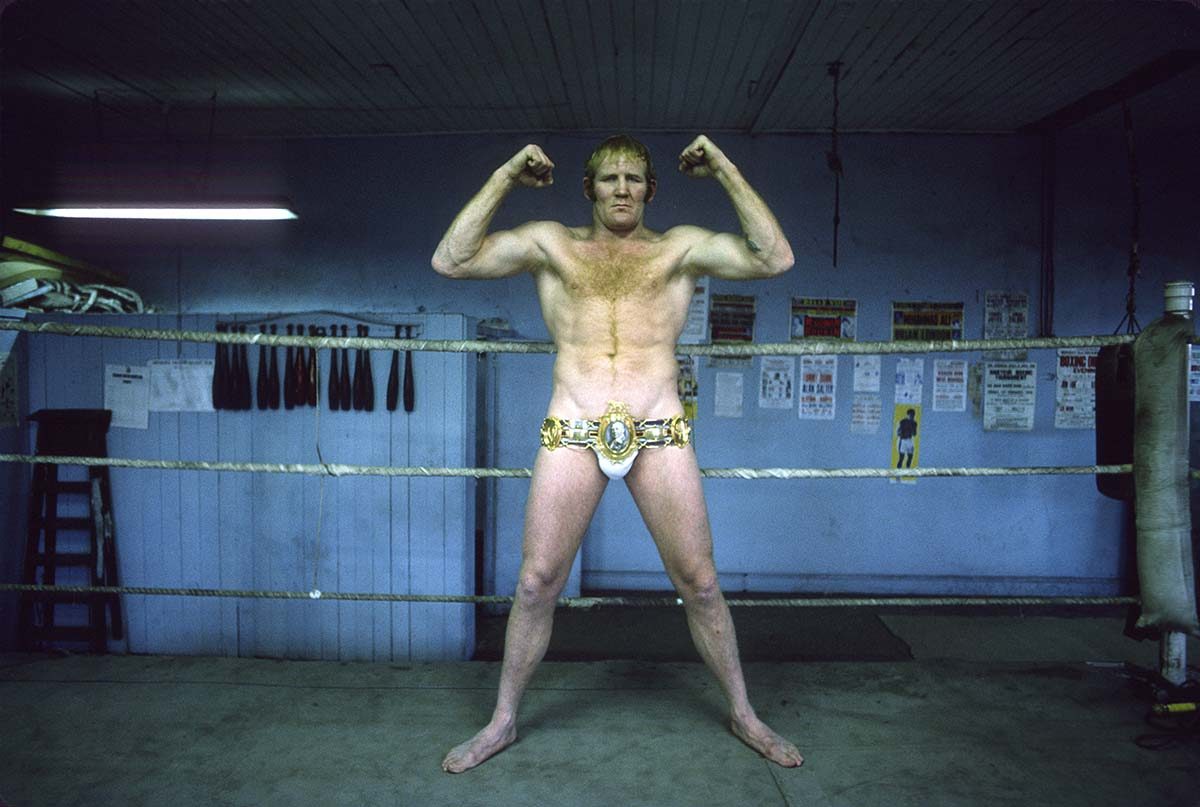
11 January 1976 Bradford – British heavyweight boxing champion Richard Dunn wearing nothing but his underpants and a Lonsdale Belt – (photo by Gerry Cranham)
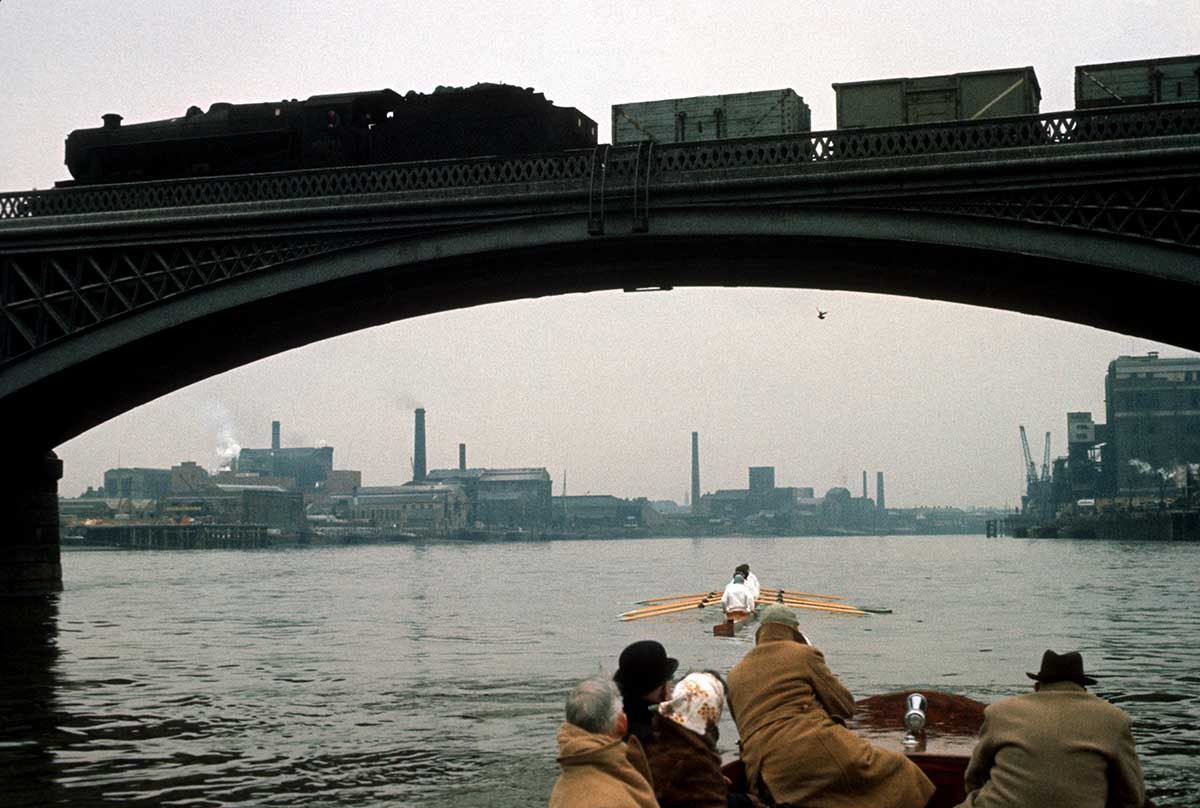
Circa March 1963, London – Rowing – The Oxford and Cambridge Boat Race Training – Cambridge row beneath a bridge as a steam train passes above – Photo: Gerry Cranham / Offside.
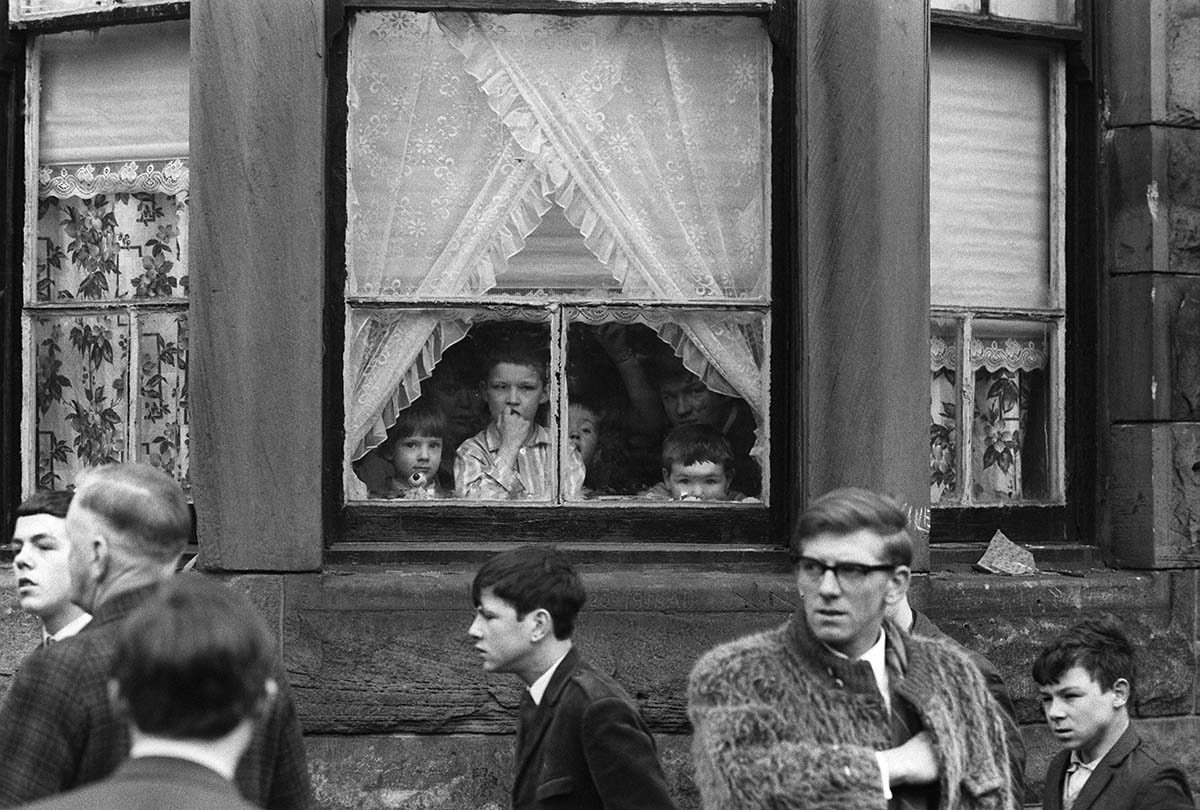
2/1/1968 Scottish Football League Division One.
Celtic v Rangers.
A family peers through their window as fans make their way to Celtic Park for kick off.
Photo: Gerry Cranham / Offside.
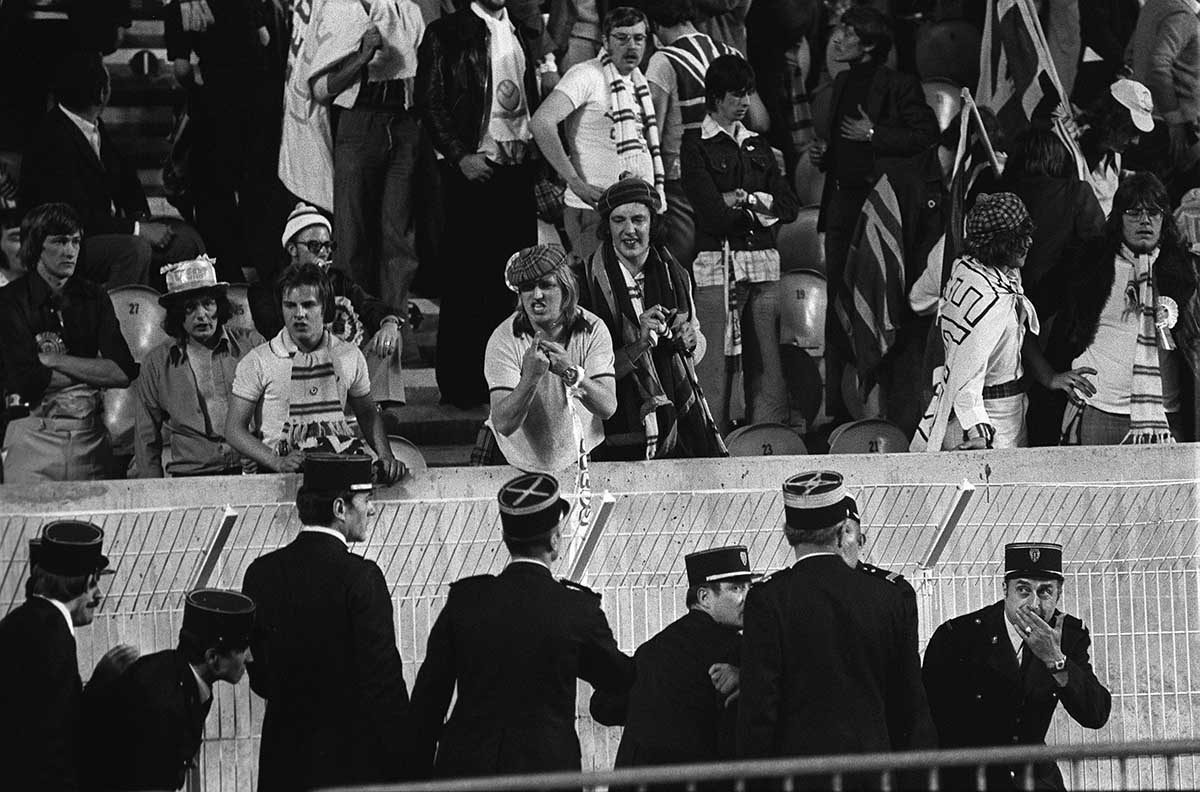
28/05/1975 Paris. European Cup Final.
Bayern Munich v Leeds United. A Gendarme looks confused as a Leeds fan gives the French the finger.
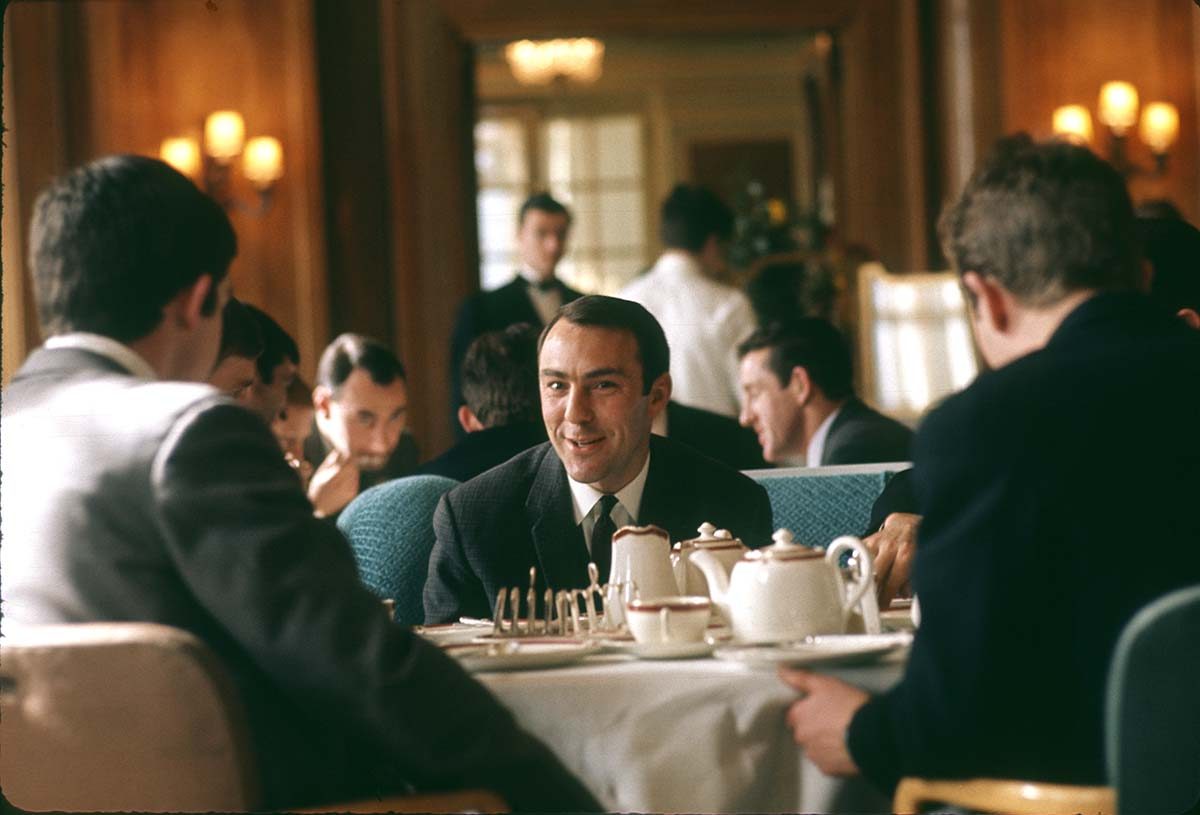
12 March 1966 Liverpool – Jimmy Greaves of Tottenham Hotspur FC sitting in the Adelphi Hotel having tea and a pre-match meal.
Photo: Gerry Cranham
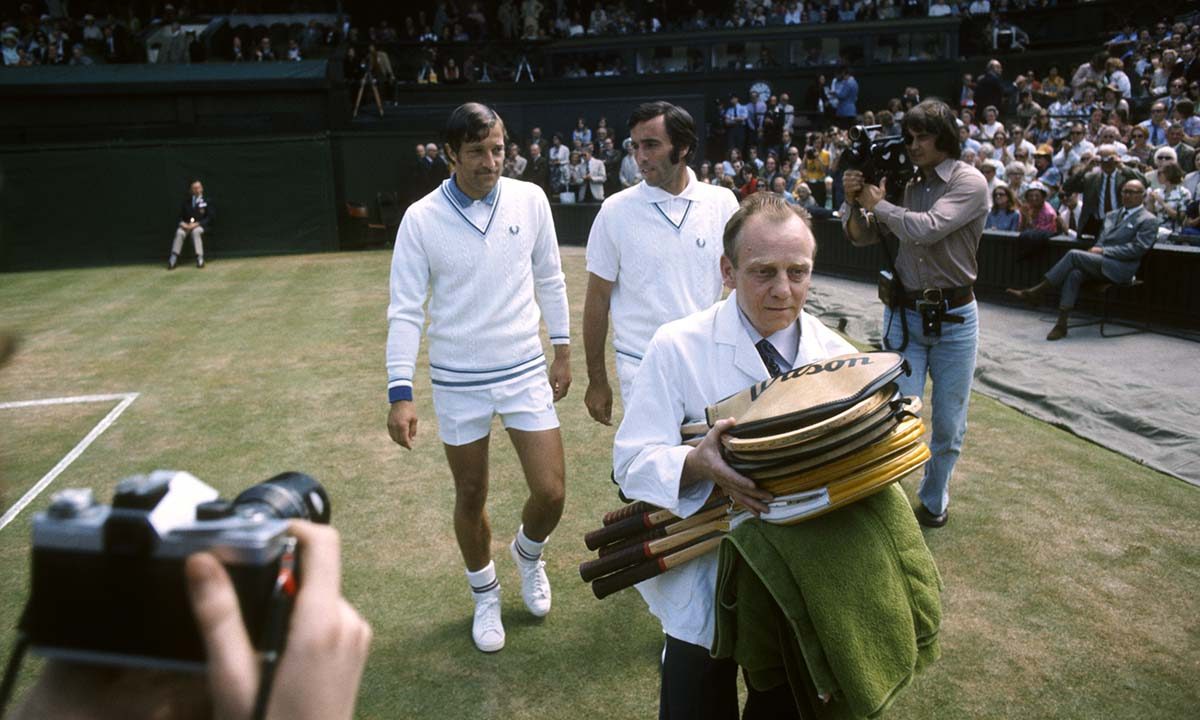
07 July 1973 Wimbledon – Mens Open Championship Final – Jan Kodes v Alex Metreveli – the two players follow a man who carries the towels and rackets –
Photo: Gerry Cranham
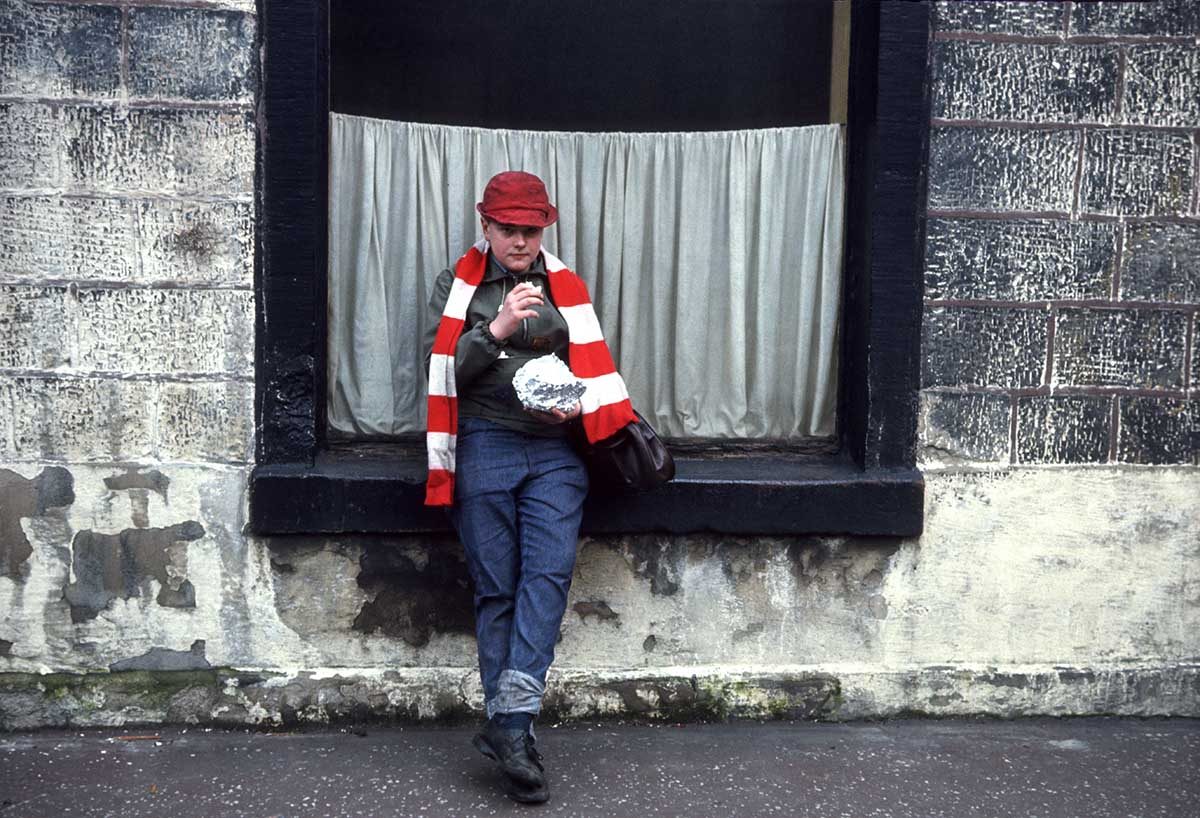
04 February 1967 Burnley v Manchester United – Football League Division One – a United supporter eating his packed lunch in the street outside Turf Moor.
Photo: Gerry Cranham
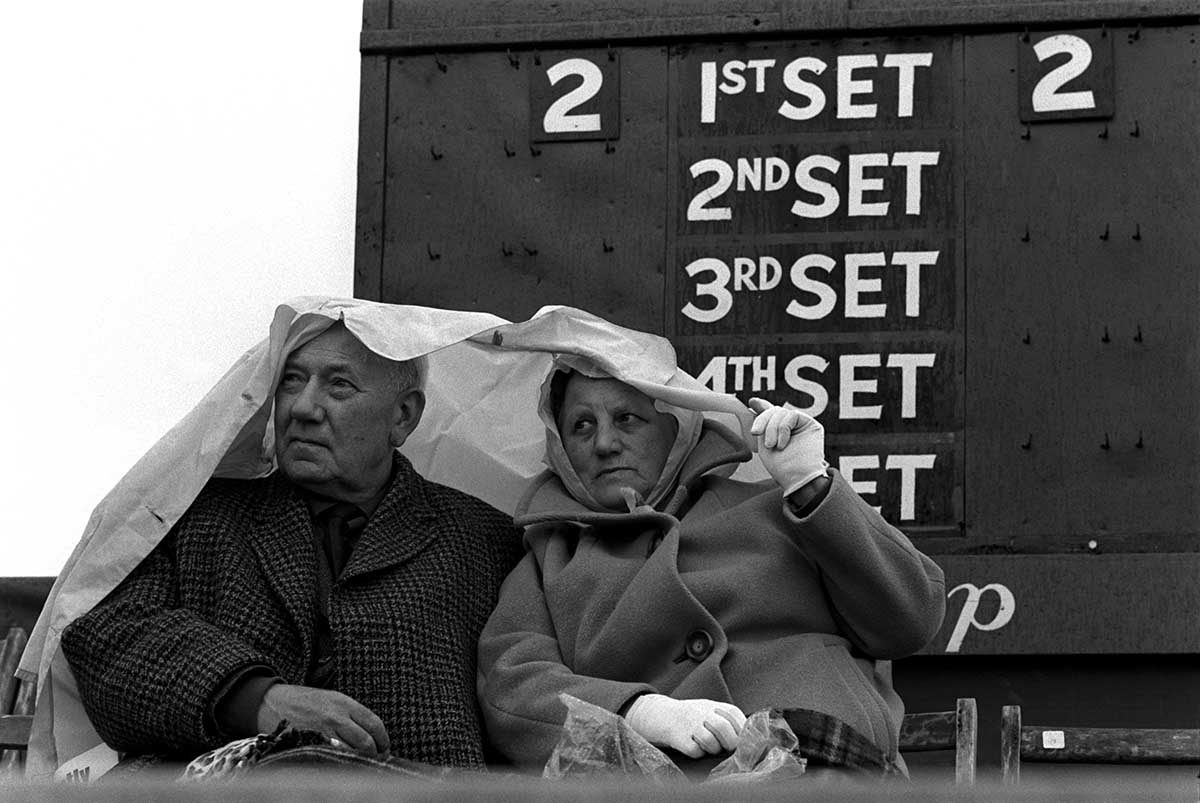
25/4/1968 British Hardcourt Tennis Championships.
West Hants Tennis Club, Bournemouth.
Two spectators cover up against the rain using a plastic sheet as play is suspended.
Photo: Gerry Cranham / Offside.

2/1/1968 Scottish Football League Division One.
Celtic v Rangers.
Medical staff treat injured spectators on the side of the pitch.
Photo: Gerry Cranham / Offside.
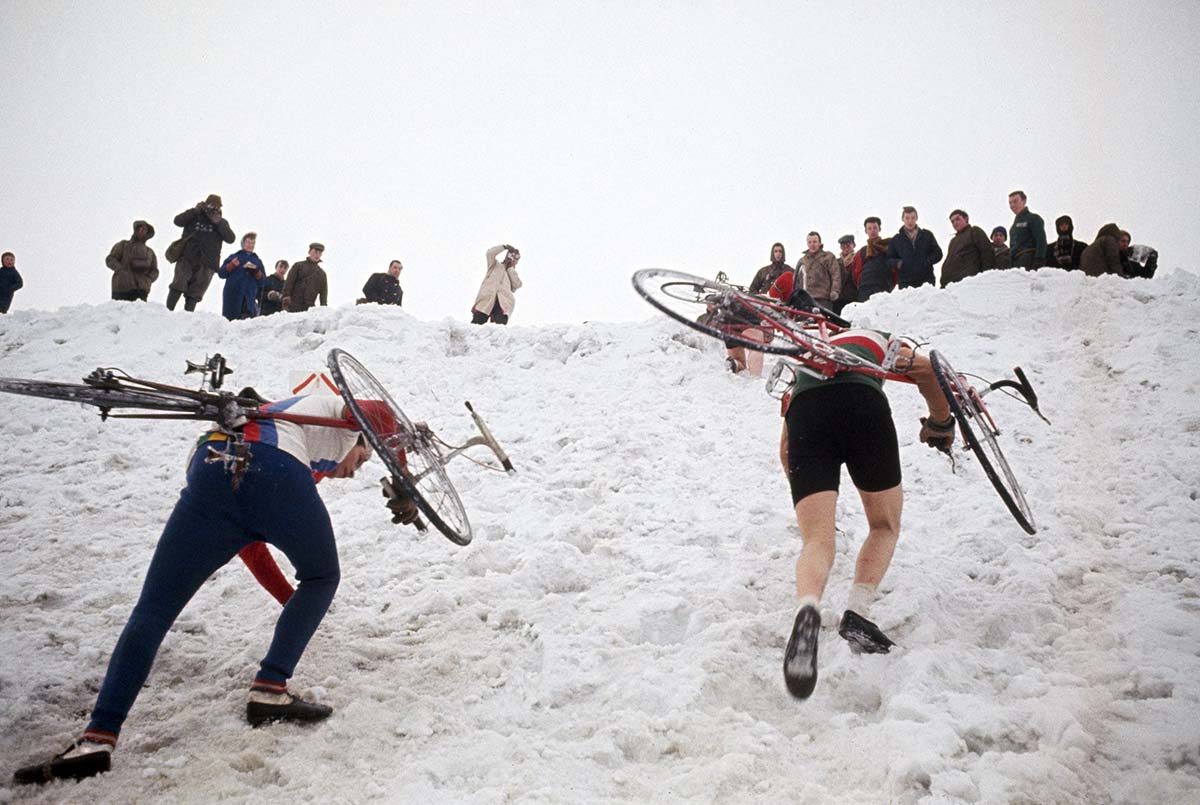
28/1/1963 Harlow. National Cyclocross Championships.
Photo: Gerry Cranham / Offside.
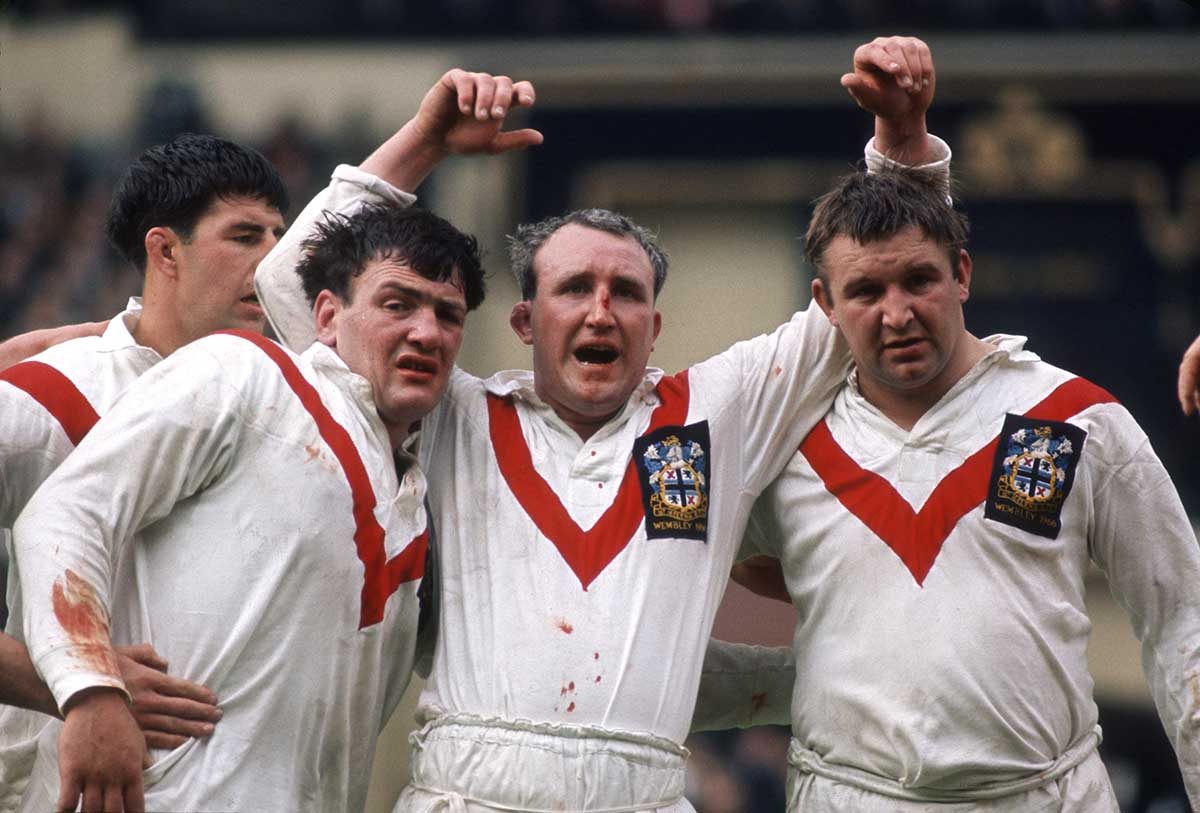
21 May 1966 Wembley – Rugby League Challenge Cup Final – St Helens v Wigan – St Helens front row forwards l to r: Cliff Watson, Bill Sayer and Albert Halsall –
Photo: Gerry Cranham
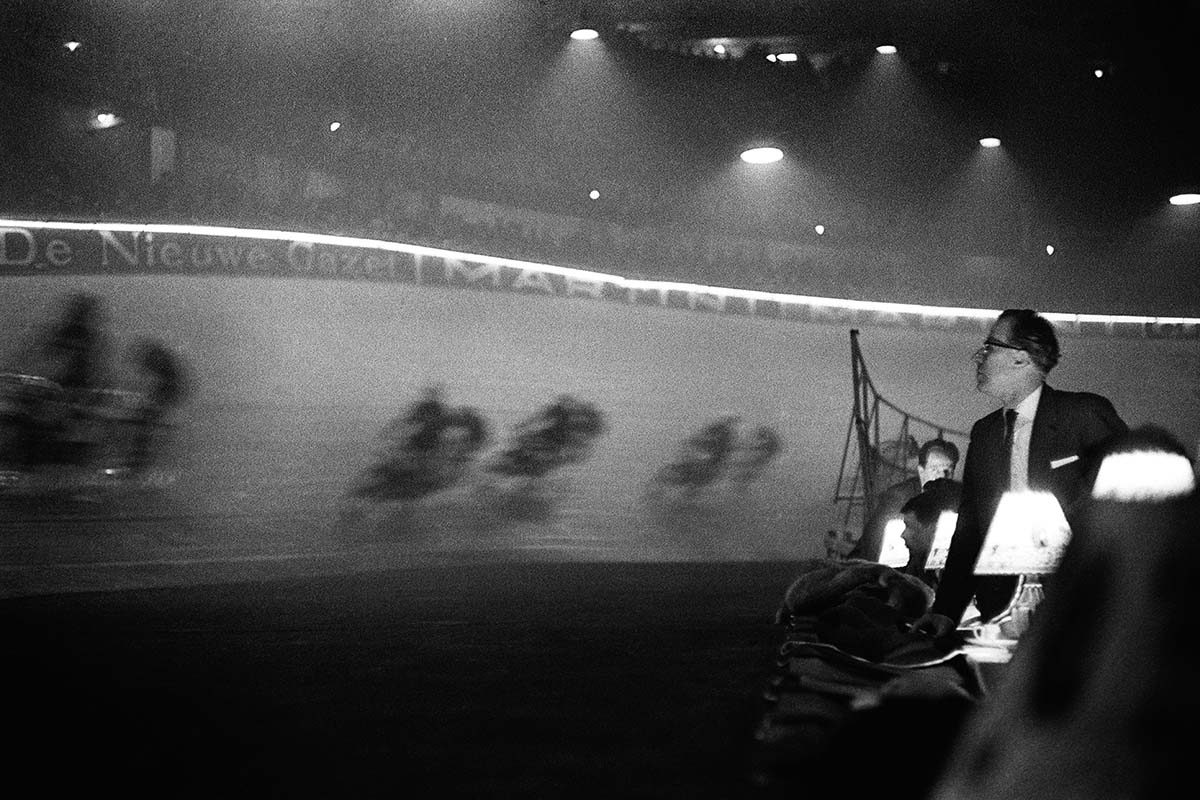
9 March 1962 – Six Day Cycle Race – A selection of images by Gerry Cranham of the 1962 6 day Cycle race in Antwerp as seen in the Subscriber Edition of Rouleur magazine.
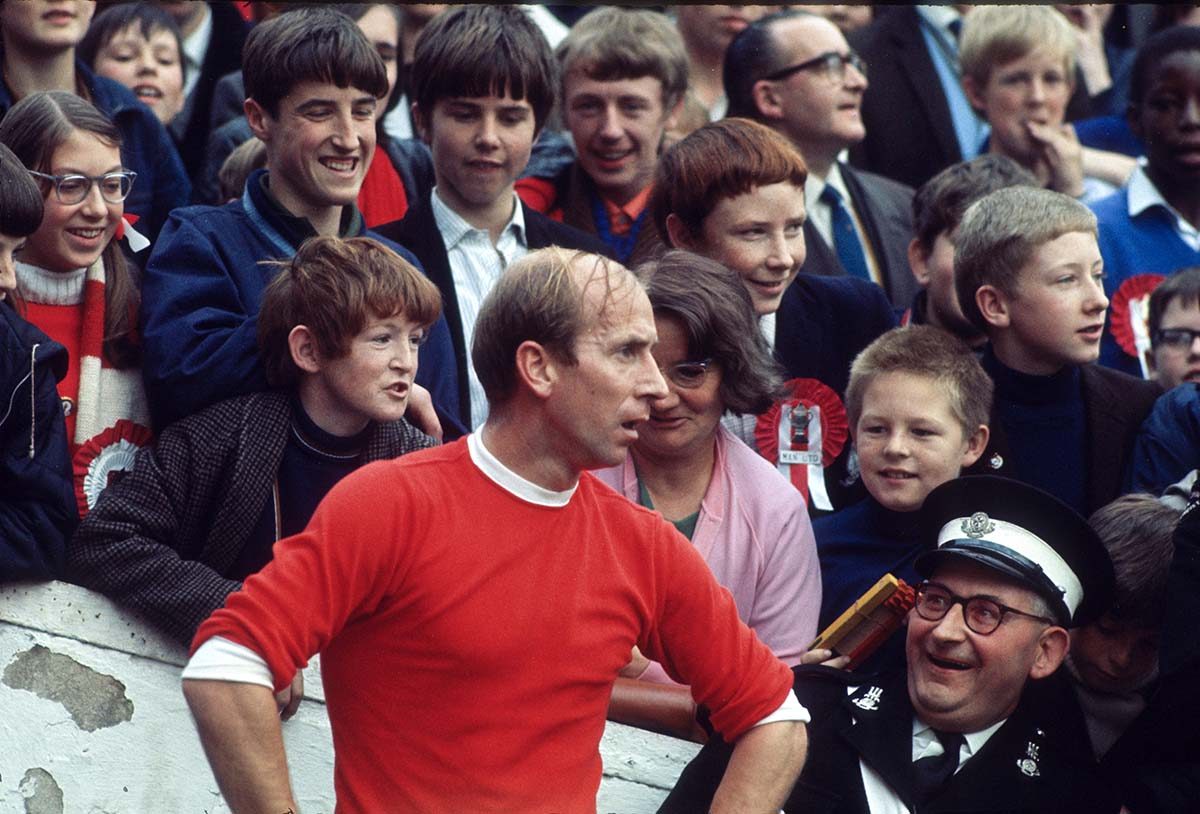
26 October 1968 London – Football League Division One – Queens Park Rangers v Manchester United – a St John Ambulance man looks in disbelief at Bobby Charlton standing right next to him as he prepared to take a corner kick – (photo by Gerry Cranham)
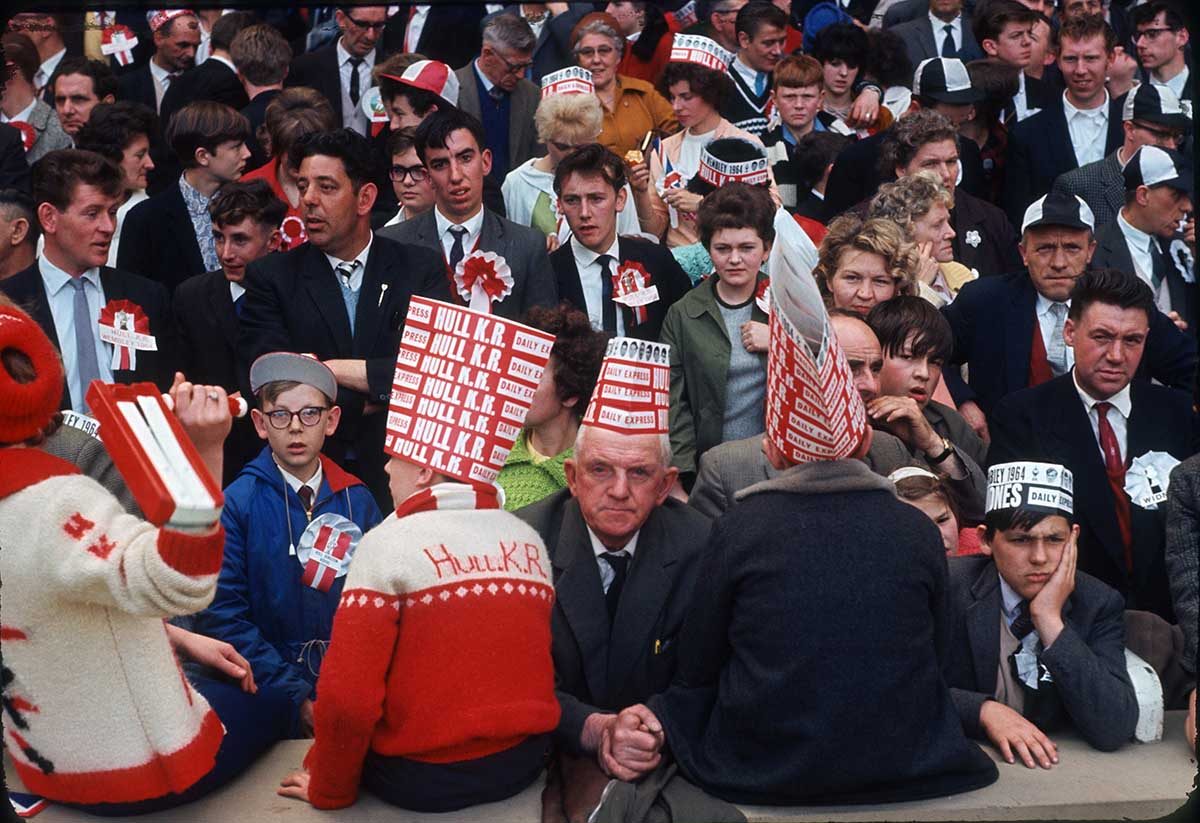
09 May 1964 Wembley Stadium, Rugby League Challenge Cup Final, Hull Kingston Rovers v Widnes, Hull KR and Widnes supporters together.(Photo by Gerry Cranham).

20 July 1969, Manchester – Running – International Maxol Marathon – Ron Hill is pursued by spectators on bikes as he competes in the Maxol Marathon, an event he goes on to win – Photo: Gerry Cranham / Offside.

3rd July 1965, Henley – Rowing – Henley Royal Regatta – Spectators try to navigate the river in their row boats – Photo: Gerry Cranham / Offside.
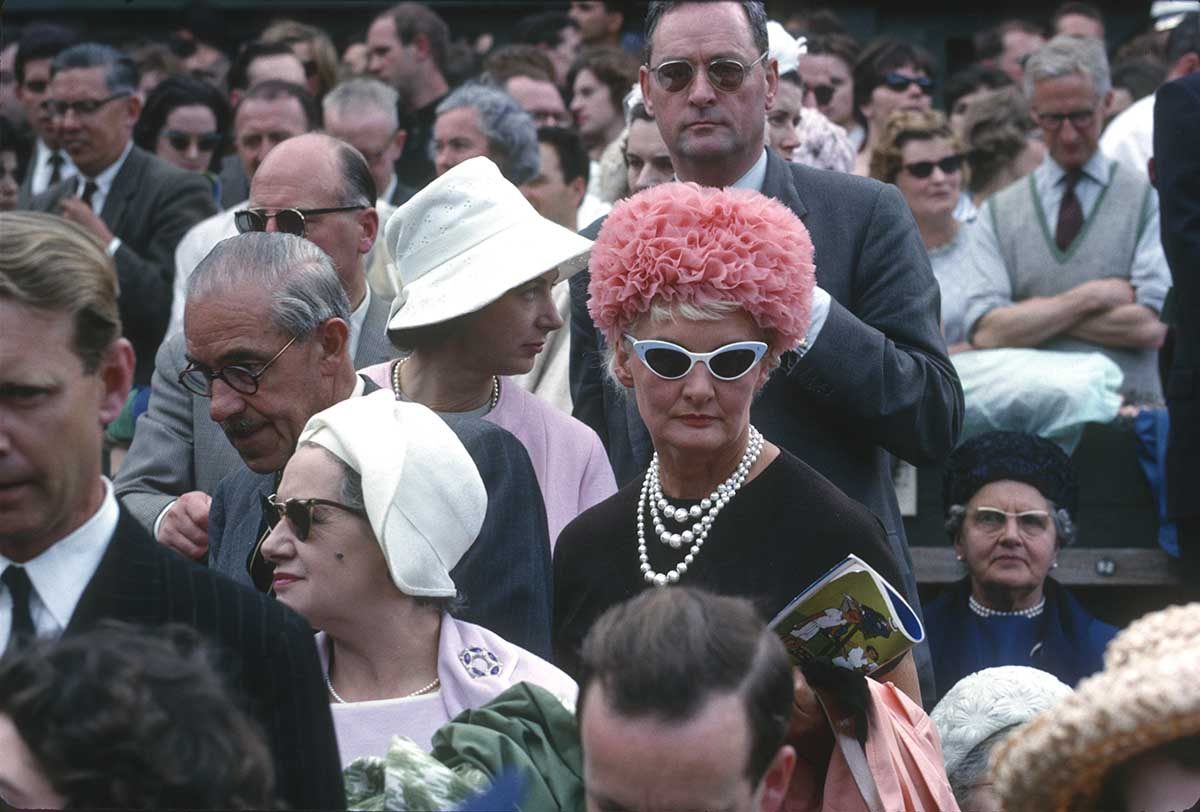
Circa July 1963 – Tennis – Wimbledon – All England Lawn Tennis Open Championship – A well dressed woman in a frilly hat, sunglasses and pearls watches the match action – Photo: Gerry Cranham
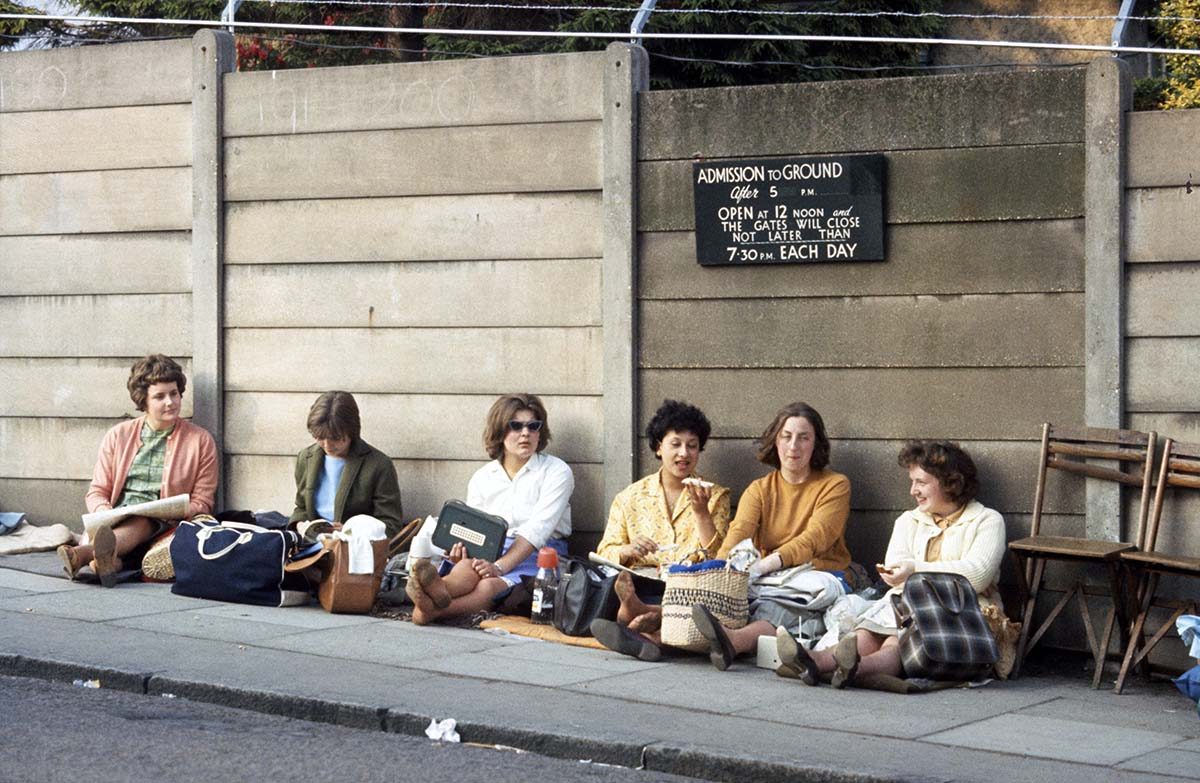
Circa July 1964 – Tennis – Wimbledon – A group of women make themselves comfortable against the walls of the grounds after queuing overnight for tickets – Photo: Gerry Cranham / Offside.
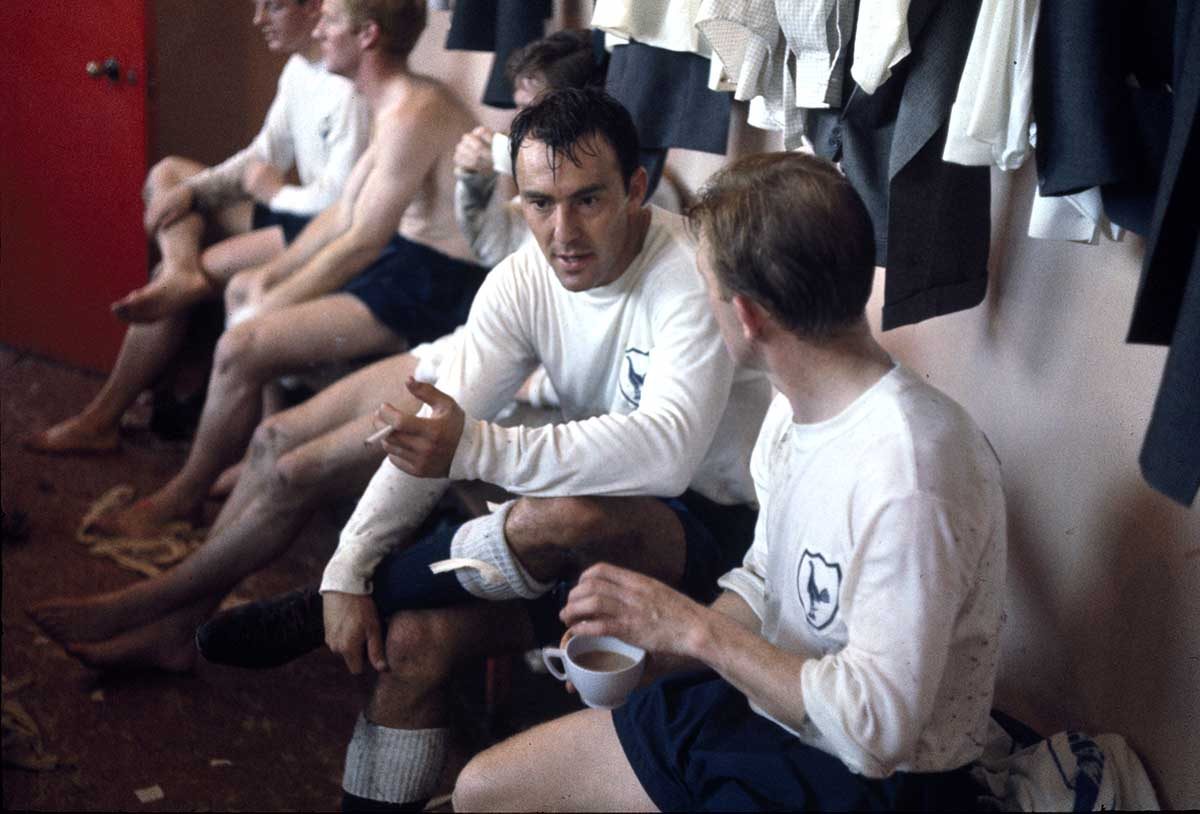
26 September 1964 – English Football League Division One – Manchester United v Tottenham Hotspur – Jimmy Greaves (centre) smokes a cigarette while talking to teammate Terry Dyson (right) who holds a cup of tea.
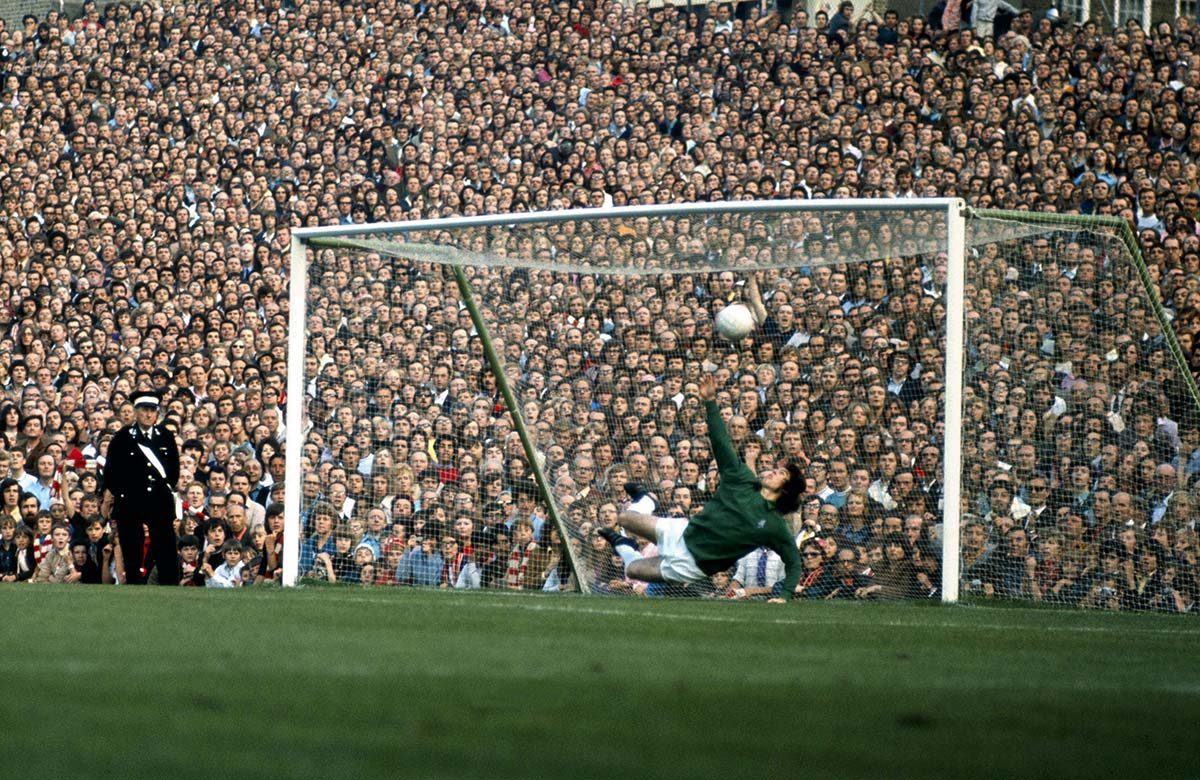
11/9/1971 English Football League Division One – Arsenal v Leeds United –
Leeds United goalkeeper David Harvey dives but is beaten by a penalty by Peter Storey, the second Arsenal goal, in front of the Clock End at Highbury.
Photo: Gerry Cranham / Offside
Lead Image: Circa July 1973 – Tennis – Wimbledon – Young female Bjorn Borg fans clap and cheer enthusiastically – Photo: Gerry Cranham / Offside.
Buy This Sporting Life by Mark Leech and Doug Cheeseman here.
Would you like to support Flashbak?
Please consider making a donation to our site. We don't want to rely on ads to bring you the best of visual culture. You can also support us by signing up to our Mailing List. And you can also follow us on Facebook, Instagram and Twitter. For great art and culture delivered to your door, visit our shop.


